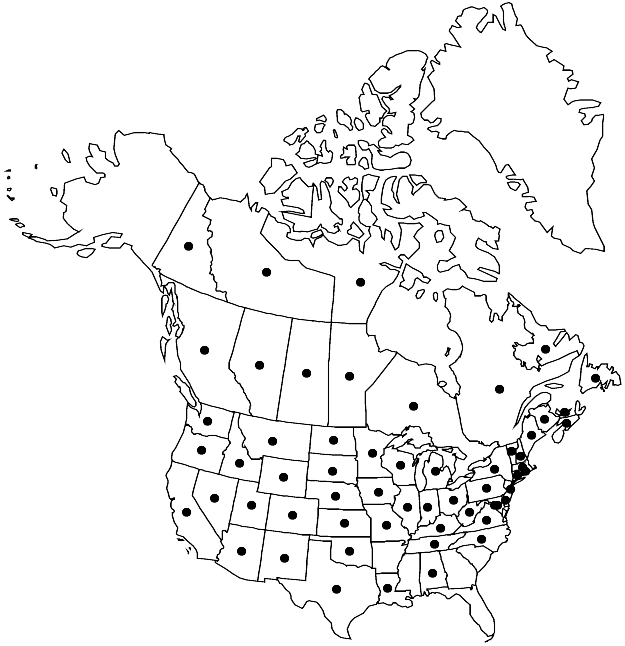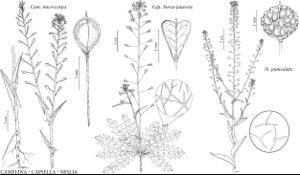Camelina microcarpa
Syst. Nat. 2: 517. 1821.
Annuals. Stems unbranched or branched distally, (0.8–) 2–8 (–10) dm, densely to moderately hirsute basally, trichomes simple, to 2.5 mm, often mixed branched ones, (glabrescent distally). Basal leaves withered by anthesis. Cauline leaves: blade lanceolate, narrowly oblong, or linear-lanceolate, (0.8–) 1.5–5.5 (–7) cm × 1–10 (–20) mm, base sagittate or minutely auriculate, margins entire or, rarely, remotely denticulate, (often subciliate), apex acute, surfaces pubescent, trichomes primarily simple. Fruiting pedicels ascending, 4–14 (–17) mm. Flowers: sepals 2–3.5 × 0.5–1 mm; petals pale-yellow, (2.5–) 3–4 (–6) × 1–2 mm; filaments 1.5–3 mm; anthers ca. 0.5 mm. Fruits pyriform to narrowly so, 3.5–5 (–7) × 2–4 (–5) mm, apex acute; valves each often with obscure midvein, margin narrowly winged; style 1–3.5 mm. Seeds reddish-brown or brown, 0.8–1.4 (–1.5) × 0.5–0.6 mm. 2n = 40.
Phenology: Flowering May–Jul.
Habitat: Farms, fields, meadows, prairies, roadsides, forest margins, open woods
Elevation: 0-2500 m
Distribution

Introduced; Alta., B.C., Man., N.B., Nfld. and Labr., N.W.T., N.S., Nunavut, Ont., P.E.I., Que., Sask., Yukon, Ala., Ariz., Calif., Colo., Conn., Del., D.C., Idaho, Ill., Ind., Iowa, Kans., Ky., La., Maine, Md., Mass., Mich., Minn., Mo., Mont., Nebr., Nev., N.H., N.J., N.Mex., N.Y., N.C., N.Dak., Ohio, Okla., Oreg., Pa., R.I., S.Dak., Tenn., Tex., Utah, Vt., Va., Wash., W.Va., Wis., Wyo., Europe, Asia, n Africa, also in South America
Discussion
Selected References
None.
Lower Taxa
"elongated" is not a number."thick" is not a number."dm" is not declared as a valid unit of measurement for this property."dm" is not declared as a valid unit of measurement for this property.
